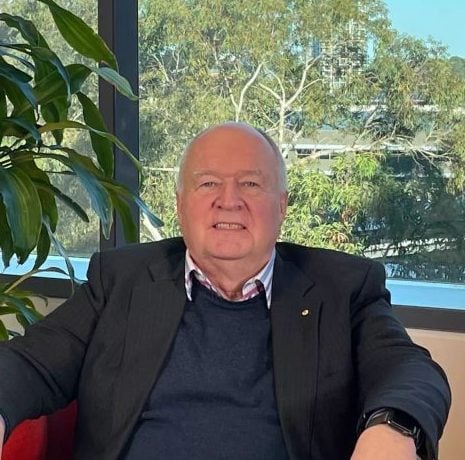What is the current state of heart failure management in Australia with regard to remote care, and in your opinion what are the key challenges?
I think in Australia, we’ve been fairly lucky recently in that there’s been a lot of developments in heart failure management, and so things have changed quite a lot recently. And over the last 4 or 5 years, we’ve got a lot more medication, a lot more specialized therapy we can use to address heart failure outcomes.
So it’s identifying people with heart failure at an early stage when there’s a lot we can do to change the course of your disease. And that’s been very challenging for regional and rural Australia. We have a smaller pool of specialists out here. We have a smaller pool of GPs. And that makes it really challenging for people to see a healthcare practitioner, and then to be diagnosed. They need access to advanced diagnostic tests. So traditionally the diagnosis of heart failure is very dependent on having an ECG. That is a very specialized piece of technology that needs specialty in acquisition, specialty in interpretation, and specialty in feedback. And of course, having that only feedback that you may or may not actually have heart failure. So our diagnostic ability for the rural and remote communities has been very challenging.
And certainly, what we know is the profile of heart failure has actually changed in that time as well. Rural and remote communities have socio-economic challenges, where people have a lower socio-economic status, and consequently they have less means to access that specialist care, or travel for those tests. So they’re often having their diagnosis made later, when their disease is already more advanced. And that has a whole set of flow-on effects. We also know that these people actually have lower health literacy as well, and they often come to us with more comorbidities. And these comorbidities often include diabetes, renal impairment, atrial fibrillation, excesses of things like lung disease secondary to smoking, and dietary issues like obesity, which are much more prevalent the more regional you go. And consequently, what we do see in some of our more disadvantaged groups is they can have a diagnosis of heart failure made on average 15 years earlier.
How can NT-proBNP and POC testing support early diagnosis or screening in remote and rural areas?
I’m a very big advocate for alternative diagnostic pathways like using Point-of-Care (POC) testing or proBNP testing. And it’s very easy to say that because I’m a very big advocate for ECHOs. So consequently, I’m aware of the limitations we have with ECHOs.
ECHOs are very hard to do; they need specialized equipment, you need a specialized sonographer, and then you need specialized skills to interpret them. So when I interpret an ECHO, I look at 5 or 6 things in each picture, and there’s an average of 60 to 70 pictures, so I’m talking upwards of 300 variables to give you an answer if the patient has a disease process. Now certainly, there’s advantages with something like an ECHO. It tells me if you’ve got any valvular disease, and it can even tell me what sort of heart failure you have. But it takes a lot of specialty, and takes time to access. There’s often a waiting list and a dearth of these services provided in regional communities.
The strong benefit of a proBNP, especially in POC tests, is it can give you an answer straight away and help you eliminate certain things. The advantages of NT-proBNP in a regional or remote community is its negative predictive value. If the POC test shows that the pro, or the NT-proBNP is significantly elevated, we can be fairly confident that there’s some structural heart disease that is probably contributing to the patient’s shortness of breath. Conversely, if I do have a patient presenting to the GP, or myself, with shortness of breath, which is a very common healthcare complaint regarding not just cardiovascular complaints but also respiratory and general decline in health, and the NT-proBNP is negative, I can be fairly confident that there’s no significant cardiac contribution. And that coupled with a normal ECG and a normal cardiovascular examination makes me very confident that they’re unlikely to benefit from further cardiovascular input.
The advantage for that is it can stop unnecessary downstream testing and allow their GP to expedite their care and point them in the right direction, whether it be an underlying blood cause like anemia, or a respiratory cause, or one of these other non-cardiac causes. So the advantages for our regional and remote patients is that it can reduce the need to travel, and give instant access and instantaneous feedback to the GP, which may then allow for that patient’s healthcare needs to be prioritized and dictated in different terms.
How are GPs equipped to handle diagnosis of an acute episode of heart failure in the remote setting?
The management of heart failure in any setting should be patient focused. And obviously the most important people, along with the patient, are their GPs who manage all their healthcare needs. And often people with cardiovascular complaints have multiple healthcare issues. So the GP’s role in managing heart failure is around identifying people who are at risk, helping establish or suspecting the diagnosis, and then titrating medications and working with their heart failure specialists to improve their outcomes.
That can be extremely challenging for GPs in regional and remote communities. There’s a lot of specialists around, there’s easier access to advanced diagnostic tests, such as cardiac MRI, ECHOs, myocardial perfusion studies, whereas we have a dearth of those in regional settings.
The real advantage with things like NT-proBNP is that it enhances the GP’s ability to document changes in a really quick real-world setting that has immediate implications for the patient. For instance, if I have a patient who’s got advanced heart failure, or I suspect of heart failure, and they come in with a strongly positive NT-proBNP, and I can then see on their examination that they’ve got significant fluid overload, I can institute diuretics, which have a strong beneficial effect on that patient’s quality of life.
How do you ensure patients in the remote areas are compliant to their medication regimens and lifestyle changes?
One thing that’s really important to note is that being a patient with heart failure is a lot of hard work. And anything that we can reduce that work and make the patient’s life easier is better. A person can often walk into a cardiologist’s office on little to no medication, and in a very short space of time being on up to 6 medications. 4 years ago, 10 years ago, we only had 3 medications, or 3 medical classes that were very effective. Now we have 4, and probably next year we’re going to have 5, with the recognition that the GLP-1 agonists are very effective. This is not even talking about their advanced cardiac implantable devices, like defibrillators and biventricular pacers. What this means is patients with heart failure have a big burden of cost to bear with dispensing fees, they have a lot of medications, and consequently they can have a lot of medication adherence problems, or side effects from medications. It can be very hard to support these people in a regional setting.
What we find here in Hunter New England Health is using a virtual heart failure model, or linking this in with local cardiac rehabilitation, linking them in with their GP, and linking them in with ongoing support networks with a special role in heart failure, doesn’t ensure compliance, but helps the patient achieve a level of compliance that they feel they’re comfortable with. And while we want patients to be on the maximum tolerated medical treatment, we have to firstly, I suppose, acknowledge patient autonomy and allow patients to make their own decisions. And part of our role is to explain the rationale between all these medications, and hopefully get them feeling better and functioning at a better level, which will make them more compliant with their medications.
Can you share examples of healthcare partnerships you’ve engaged in to improve HF care in rural settings?
I’ve got a good example of how interdisciplinary care has changed significantly over the past few years. I was recently at a diabetic conference and we were talking about what kills diabetic patients. And generally speaking, it’s renal failure and heart failure. They’re the 2 big outcomes for diabetic patients. But thankfully now with the modern medical therapy, if you have renal impairment, we need you to be on 3 key medications: an ACE inhibitor, ARB, or ARNI; we need you to be on an SGLT2 inhibitor; and we need you to be on an MRA. And I said, thankfully I need you to be on those 3 medications if you have heart failure, irrespective of the type. The only difference really now is beta-blockers, and beta-blockers need to be given to people with HFrEF not HFpEF. So nowadays the cardiologist and the nephrologist are basically on the same page.
So interdisciplinary care is always vital, but we have to remember this, we have to support their GPs, because the old joke is a GP is the doctor that starts the medications that cardiologists prescribe. And if the GPs don’t have a sound understanding of why we’re giving some of these medications, and patients can’t understand or see the benefits of those medications, the side effects and their interactions, we’re not going to have good compliance, and we’re not going to have patient-centered care.
How would you advise your peers in Asia Pacific on optimising HF care in a remote setting for improvement in patient outcomes?
Each health community has its own challenges, and we see that here in Australia. We don’t have 1 model of care that can treat heart failure effectively for First Nations people, for people living in metropolitan centres, or people working in regional and remote communities. And often people need to travel. And with our ageing population here in Australia, what was working 5 or 10 years ago doesn’t necessarily work moving forward.
I think the most important way of managing people in any condition, in any situation, is to be flexible about those patients’ needs. Here in Tamworth in regional and rural New South Wales, we found it very useful to have a range of tools available, working with remote or regional clinics, supplementing that with telehealth, and giving the GPs a well-supported service. Having those coupled with advanced diagnostics, like POC NT-proBNP, ECHO, Holter monitors, enhances their care. This will be slightly different depending on your own healthcare service, but I think it’s identifying these patients and early commencement of GDMT, working within the constraints of your healthcare system, and working within the scope of the patient’s desires.
I have a strong interest in First Nations people. Hunter New England Health is a bit unusual in so far that we have 25% of the state’s First Nations people calling Hunter New England Health home. First Nations people have worse cardiovascular outcomes compared to non-indigenous people, and there’s a range of reasons for this. I think there’s a lot of challenges in this area, and we’re doing very well closing the gap with this being recognised. However, there’s a few issues with this. One of the key issues with outcomes with the respective people with heart failure is identifying people who have heart failure. If we know you have heart failure, we have a lot of useful treatments for you. However if we don’t know that you have heart failure, we can’t really treat you effectively. Using something like the NT-proBNP POC test machine, is an easier, less intrusive way of identifying heart failure in people who would otherwise not have testing done. And if we do identify that they do have heart failure, we can get them into effective treatment in clinics earlier on in the piece. So I think having non-traditional testing in regional and rural communities, especially those with First Nations people in them, is very advantageous.
Looking at the STRONG-HF trial, the biomarker monitored rapid up-titration of drugs is now included in the ESC HF guidelines focus update 2023, what is its place in remote areas?
There was a recent study that was published called the STRONG-HF study, and that had some key findings. I think the big finding out of that was irrespective of your degree of heart failure, uptitrating those medications to the maximum tolerated amount, showed that you reduced heart failure readmissions and reduced mortality over a very short time frame. So what that means to me is it’s not just a matter of getting these people on the initial drugs at the initial doses, we should be doing our best to up-titrate these medications to the maximum tolerated doses.
This can be very challenging in regional and remote communities, we have fewer healthcare practitioners. And this is why it’s vital to have a comprehensive heart failure service that includes things like cardiac rehab, virtual heart failure services, and has extensive feedback to both their patients, their GPs and their specialists. It does show that good clinical practice can make real-world outcomes for patients.


















